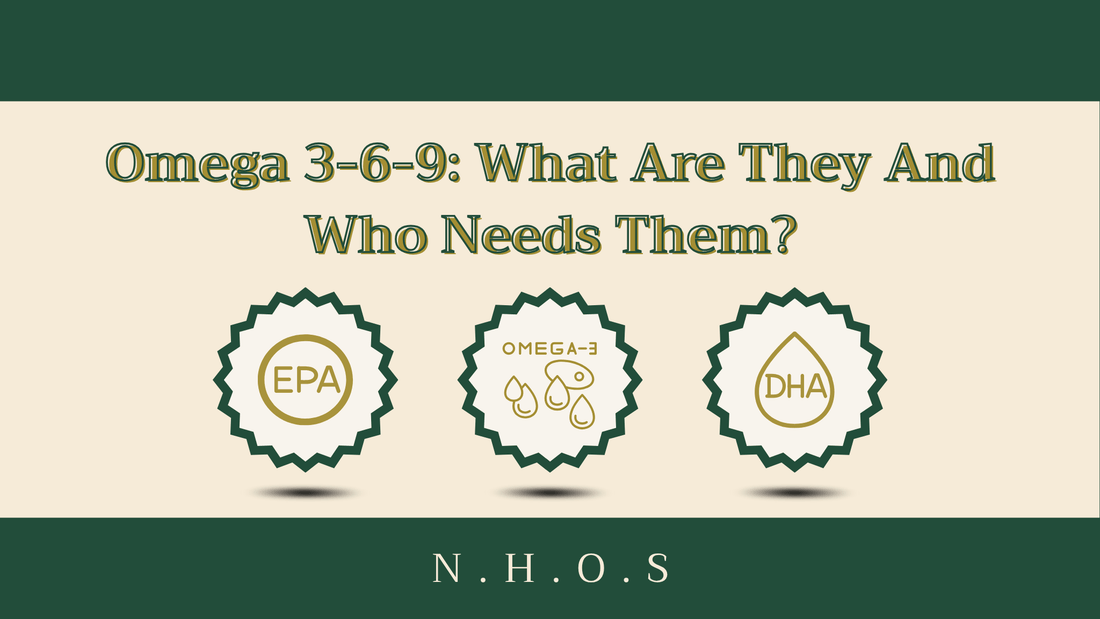
Omega 3-6-9: What Are They And Who Needs Them?
We often hear health tips like: “Get more Omega-3s!” But what about Omega-6 and Omega-9? Are they just as important? Let’s take a closer look at these healthy fats, what they do, where they come from, and how they support our well-being.
What Are Omega 3, 6, and 9 Fatty Acids?
Omega fatty acids are healthy fats that play important roles in the body. The numbers 3, 6, and 9 refer to their chemical structure - not their nutritional value. So, Omega-9 isn’t “better” just because it has a higher number.
- Omega-3: Essential fatty acids - our body can’t make them, so we need to get them from food.
- Omega-6: Also essential and common in everyday diets.
- Omega-9: Non-essential (our body can make them), but still offers great health benefits.
Omega-3 Benefits
Omega-3s are known as powerful anti-inflammatory fats. They’re key building blocks for your brain and nervous system. The most beneficial types are:
- EPA and DHA (mainly from fish)
- ALA (from plants)
Benefits include:
- Supporting heart and brain health
- Reducing inflammation
- Improving mood and memory
- Helping protect against chronic diseases
Omega-6 Benefits
Omega-6s also support the heart and brain, similar to Omega-3s. But balance is key.
In moderation, Omega-6s:
- Help maintain healthy skin and hair
- Support bone health
- Regulate metabolism
However, too much Omega-6 especially without enough Omega-3 may lead to inflammation.
Omega-9 Benefits
Unlike Omega-3 and 6, our bodies can make Omega-9. But getting more through food still helps.
Benefits include:
- Lowering “bad” LDL cholesterol
- Raising “good” HDL cholesterol
- Reducing the risk of heart disease and stroke
Omega-9s are found in many heart-healthy diets like the Mediterranean diet.
Food Sources of Omega 3-6-9
Omega-3 Rich Foods
- Animal-based (EPA & DHA): Salmon, sardines, mackerel, tuna
- Plant-based (ALA): Flaxseeds, chia seeds, walnuts, sacha inchi oil, soybean oil
Omega-6 Rich Foods
- Vegetable oils (corn, soybean, sunflower)
- Meat, eggs, dairy
- Nuts and seeds
Note: Omega-6 is easy to overconsume, especially with processed foods and fast food.
Omega-9 Rich Foods
- Olive oil, avocado, almonds, cashews, sunflower oil, canola oil
These foods not only taste great but also provide lasting health benefits.
The Takeaway: Balance Matters
Most people today consume too much Omega-6 - thanks to processed foods and modern eating habits. While Omega-6 is necessary, it should be balanced with more Omega-3s for better overall health.
So instead of focusing on just one type of fat, try to eat a variety of healthy fats, especially those rich in Omega-3. Your body and brain - will thank you!
